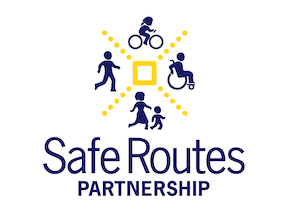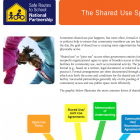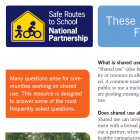The following publications are produced by the Safe Routes Partnership for use in advancing Safe Routes to School, active transportation, and shared use in all communities. To search for a publication on a specific topic, use the advanced search tool and start typing in "Safe Routes Partnership" in the author field, then select it from the list that appears.
This fact sheet is a companion to At the Intersection of Active Transportation and Equity: Joining Forces to Make Communities Healthier and Fairer.
This fact sheet is a companion to Taking Back the Streets and Sidewalks: How Safe Routes to School and Community Safety Initiatives Can Overcome Violence and Crime.
In over 17,000 schools around the country, these programs are making it easier and safer for students to be healthy by walking or bicycling to school.
Safe Routes to School programs can succeed in rural areas. But ensuring that schoolchildren can get the benefits of walking and bicycling to school in rural communities requires dealing with some challenges and barriers that may be different than in other areas.
This resource is designed to address the variance in terminlogies when referring to shared use.
This resource is designed to address some of the most frequently asked questions that arise while adopting shared use policy or implementing shared use agreements.
When it comes to walking and bicycling, rural communities can be the best of environments and the worst of environments. Historically, small rural towns were very walkable. With small main streets and compact development, it was easy to walk from place to place while running errands.
The rate of childhood obesity has increased four-fold over the past forty years, leading to serious health risks for children.
The report considers the state of walking and bicycling infrastructure in North Carolina, citing inequitable safety statistics for non-motorized transportation and focusing on state funding levels that fall far below what is needed for bicycle and pedestrian improvements or what is promised through state-level policy.
This report is an account of positive changes that occur when broad groups of stakeholders work together on behalf of our children. Community groups and individuals helped galvanize the call for these changes, demonstrating broad support for active transportation.



